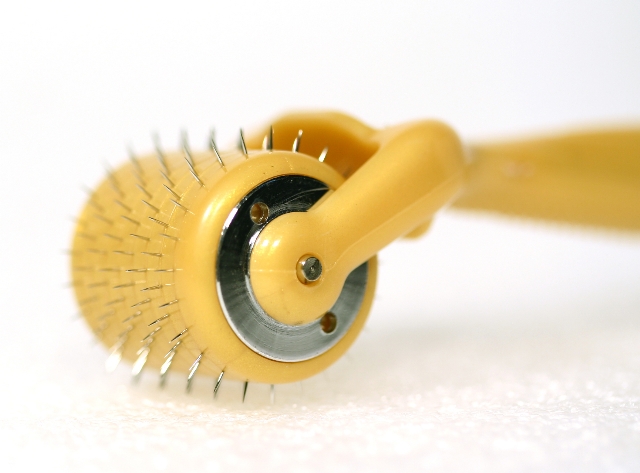The Food And Drug Administration (FDA), the US regulating authority in the sphere of medical devices, has published guidance on micro-needling products.

Notes
The present document constitutes a final version of the draft guidance issued previously in September 2017. Due to its legal nature, the document does not establish any mandatory requirements to be followed, it only describes the current thinking of the authority on the topic, and provides additional recommendations, and clarifications to be considered by all the parties involved. Thus, an alternative approach could be applied, providing that such an approach complies with the applicable requirements and is agreed with the Agency.

Regulatory Background
According to the document, the present FDA guidance is intended to assist in making the correct determination of whether the micro-needling product subject to review falls within the scope of the definition of a medical device under section 201(h) of the Federal Food, Drug, and Cosmetic (FD&C) Act, and, consequently, should be regulated accordingly. It also describes the regulatory framework for placing micro-needling devices for aesthetic use on the US market.
First of all, the document outlines the general characteristics and features of medical devices covered by its scope. In particular, it covers various medical devices containing needles incorporated in the device in any way. The document covers all micro-needling devices irrespectively of whether the actual application of needles to the skin is being performed manually, or in a motorized way (in this case, the depth of penetration and its speed could be controlled). Thus, the scope of the FDA guidance on micro-needling products covers, inter alia, the following products:
- Microneedling or needling instruments,
- Needlers
- Dermal rollers,
- Microneedle rollers,
- Microneedle stamps,
- Dermal stamps, and
- Various variations of the devices above.
The medical devices covered by the scope of the present FDA guidance are usually used to improve the appearance of the skin, facilitate its exfoliation, and also to treat different skin conditions. Depending on the particular micro-needling product, such devices could be intended to be used for single or multiple patients, providing that there are necessary cleaning solutions incorporated, or the device could be used with additional needle cartridges, or any other solutions implemented to ensure the safe use of the micro-needling product for multiple patients.
It is important to mention that in certain cases micro-needling products could meet the definition of combination products since they are often marketed together with special substances. Such devices would be regulated by the Center for Drug Evaluation and Research (CDER), the Center for Biologics Evaluation and Research (CBER), and/or the Center for Devices and Radiological Health (CDRH). However, the scope of the present FDA guidance does not cover micro-needling combination products. Thus, the Agency recommends the manufacturers of such products to contact the Office of Combination Products (OCP) to get additional clarifications regarding the applicable framework.
In some cases, the substances intended to be used with a micro-needling product are also indicated in the instructions for use supplied with the devices.
Besides the microneedle combination products, the scope of the FDA guidance on micro-needling products also does not cover the following:
- Acupuncture needles,
- Hypodermic needles (as well as other needles intended for injections),
- Tattoo machine needles,
- Needle probes emitting any type of energy or deliver any type of energy to a patient, and
- Dermabrasion devices.
The Agency also mentions that dermabrasion devices are Class I medical devices exempted from 510(k) premarket notification. The main difference between them and micro-needling devices is the following: dermabrasion devices are intended to be used to abrade or remove layers of the skin via shear forces, while micro-needling devices are based on the use of needles. Thus, these devices should be distinguished on the basis of design, construction, and the mode of action, even if they have the same or similar intended purpose as indicated by the manufacturer.
Micro-needling Products as Medical Devices
As it was already mentioned before, certain micro-needling products meet the definition of medical devices and thus should be regulated accordingly, while others are not. The main purpose of the FDA guidance on micro-needling products is to provide additional recommendations regarding the determination of whether the particular micro-needling product is a medical device or not.
Microneedling devices intended for aesthetic use are Class II medical devices (under the risk-based classification). These devices are subject to 510(k) premarket notification and special controls under 21 CFR 878.4430(b)(1)-(10). It is important to mention that medical devices intended for transdermal delivery of topical products are not micro-needling devices.
The Agency emphasizes the importance of the correct indication of the intended purpose of the micro-needling device on its labeling since it is one of the aspects to be considered when determining the legal nature of the device in question. The manufacturer shall be responsible for ensuring that any and all claims and statements made are accurate and reliable.
According to the FDA guidance on micro-needling products, the following aspects would be considered by the Agency when making a determination of the applicable framework:
- Claims and statements in the labeling of the device, any advertising, and promotional materials, describing the purpose of a micro-needling product (e.g. treatment of a disease or its prevention, etc.). The FDA additionally emphasizes that any mentions of penetration would be construed as affecting the structure or function of the body. However, the removal of the stratum corneum would not be construed as affecting the structure or functions of the human body, providing that living layers remain untouched. According to the document, a micro-needling product is subject to regulation as a medical device in case if it is intended to: treat scars, wrinkles, deep facial lines, cellulite and stretch marks, dermatoses, acne, alopecia, and also to stimulate collagen production and angiogenesis, and to promote wound healing.
- Product design and technological characteristics/features – the needle penetration beyond the stratum corneum is one of the most important criteria confirming that the micro-needling product in question should be regulated as a medical device. In general, in the context of the product design and characteristics, the Agency will pay attention to such aspects as the length of a needle, its sharpness, and also the degree of penetration control. For this purpose, the FDA will assess all the information available in the product’s specifications and other materials provided by the manufacturer.
Microneedling Products That Are Not Devices
Aside from describing the criteria to be used to determine whether the micro-needling product subject to review is a medical device, the FDA also outlines the micro-needling products that should not be construed as medical devices.
For instance, the ones intended to facilitate exfoliation of the skin and improve its appearance, in general, are not medical devices, providing that they do not penetrate living skin (its epidermal and dermal layers).
In spite of not being determined as medical devices, such products could still be subject to regulation under the FD&C Act or other laws and regulations.
Summarizing the information provided here above, the FDA guidance on micro-needling products is dedicated to the most important criteria to be applied when determining whether the micro-needling product in question should be subject to regulation as a medical device or not. The document also describes the products which may have a similar design or intended purpose, but are not medical devices according to the applicable regulations.
How Can RegDesk Help?
RegDesk is a next-generation web-based software for medical device and IVD companies. Our cutting-edge platform uses machine learning to provide regulatory intelligence, application preparation, submission, and approvals management globally. Our clients also have access to our network of over 4000 compliance experts worldwide to obtain verification on critical questions. Applications that normally take 6 months to prepare can now be prepared within 6 days using RegDesk Dash(TM). Global expansion has never been this simple.
Sources:

